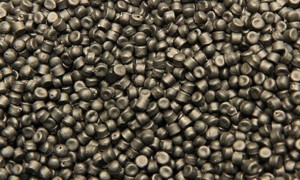The benefits of recycling might not be immediately and directly seen, however…
- Recycling a four-foot stack of newspapers saves the equivalent of one 40-foot fir tree.
- Every glass bottle recycled saves enough energy to light a 100-watt light bulb for 4 hours.
- Making cans from recycled aluminum saves 95% of the energy required to produce cans from virgin material.
- Americans throw away enough aluminum to rebuild the entire commercial airline fleet every three months.
Recycling efforts at CU have prevented over 235,000 fir trees from being cut down and has saved 415,000 gallons of gasoline, 98 million gallons of water, 843,000 pounds of air pollutants, 65 million kilowatt hours of electrically, and 67,500 cubic yards of landfill waste since 1980!
Why use a valuable material or product once, and then place it in your trash to be buried in a landfill? Instead, divert that material for recycling, and capture the energy and resources already used to make that product. Since recycled materials have been refined and processed once, manufacturing the second time around is much cleaner and less energy-intensive than the first.
By using recycled materials instead of trees, metal ores, minerals, oil, and other raw materials harvested from the earth, recycling-based manufacturing conserves the world’s scarce natural resources. This conservation reduces pressure to expand forests cutting and mining operations.
General Recycling:
- In a lifetime, the average American will throw away 600 times his or her adult weight in garbage. This means that each adult will leave a legacy of 90,000 lbs. of trash for his or her children.
- Recycling all of your home’s waste newsprint, cardboard, glass, and metal can reduce carbon dioxide emissions by 850 pounds a year.
- Each of us generates on average 4.4 pounds of waste per day per person.
- In this decade, it is projected that Americans will throw away over 1 million tons of aluminum cans and foil, more than 11 million tons of glass bottles and jars, over 4 and a half million tons of office paper and nearly 10 million tons of newspaper. Almost all of this material could be recycled.
- One tree can filter up to 60 pounds of pollutants from the air each year.
Reduce and Reuse:
- We fill 63,000 garbage trucks every day in this country-lined up they would stretch 400 miles. (Nat’l Audubon Society, 1994)
- In 1995, the United States generated 208 million tons of municipal solid waste-an average of 4.3 pounds of waste per person per day. (EPA, 1996)
- In 1991, there were more than 7 million copiers in operation in the U.S. These copiers produce nearly 400 billion copies per year (almost 750,000 copies a minute). (The Recycle Planner, 1992)
- One out of every 10 dollars we spend at stores is for packaging. Packaging is 1/3 of our waste by weight or 1/2 by volume. (Worldwatch Institute, 1996)
- If every household in the U.S. reused a paper grocery bag for one shopping trip, about 60,000 trees would be saved. (S.C. Office of Solid Waste Reduction, 1996)
Glass, plastic & metals
- Recycled aluminum saves 95% energy vs. virgin aluminum; recycling one aluminum can saves enough energy to run a TV for 3 hours (Reynolds Metal Company).
- Recycled aluminum reduces pollution by 95% (Reynolds Metal Company).
- Enough aluminum is thrown away to rebuild our commercial air fleet every 3 months.
- You can make 20 recycled aluminum cans with the energy it takes to make one new aluminum can from bauxite ore. (Windstar Institute)
- Recycled glass saves 50% energy vs. virgin glass (Center for Ecological Technology)
- Recycling one glass container saves enough energy to light a 100-watt bulb for 4 hours (EPA)
- Recycled glass generates 20% less air pollution and 50% less water pollution (NASA)
- Glass can be reused an infinite number of times; over 41 billion glass containers are made each year (EPA)
- We use enough plastic wrap to wrap all of Texas every year (EPA)
- Five recycled soft drink bottles make enough fiberfill for a man’s ski jacket. Thirty-six recycled bottles can make one square yard of carpet. (Colorado Recycles, 1995)
- Annually, enough energy is saved by recycling steel to supply Los Angeles with electricity for almost 10 years.
Paper:
 One ton of recycled paper saves 3,700 pounds of lumber and 24,000 gallons of water.
One ton of recycled paper saves 3,700 pounds of lumber and 24,000 gallons of water.- One ton of recycled paper uses: 64% less energy, 50% less water, 74% less air pollution, saves 17 trees and creates 5 times more jobs than one ton of paper products from virgin wood pulp.
- Recycling 1 ton of paper saves 17 trees (35’ tall), 2 barrels of oil (enough fuel to run the average car for 1260 miles or from Dallas to Los Angeles), 4100 kilowatts of energy (enough power for the average home for 6 months), 3.2 cubic yards of landfill space (one family size pick-up truck) and 60 pounds of air pollution. (Trash to Cash, 1996)
- It takes one 15-year old tree to produce half a box of paper. Use both sides of all paper. (Midpoint International)
- Recycled paper saves 60% energy vs. virgin paper (Center for Ecological Technology)
- Every year enough paper is thrown away to make a 12’ wall from New York to California
- Everyday Americans buy 62 million newspapers and throw out 44 million. That’s the equivalent of dumping 500,000 trees into a landfill every week.
- If everyone in the U.S. recycled just 1/10 of their newsprint, we would save the estimated equivalent of about 25 million trees a year.
- It takes 75,000 trees to print a Sunday Edition of the New York Times.
- If we recycled all of the newspapers for one Sunday, we would save 550,000 trees or about 26 millions trees per year. (CA Dept of Conservation, 1995)
SOURCE: http://www.colorado.edu/ecenter/recycling-facts





 By
By 









